The term “Five Families” is a moniker that resonates with the shadowy world of American organized crime, specifically referring to the five dominant Italian American Mafia families in New York City. These families – Bonanno, Colombo, Gambino, Genovese, and Lucchese – have become infamous, not only for their criminal activities but also for their enduring presence in popular culture. Their existence and inner workings were thrust into the public eye in 1963, when a Mafia member broke the code of silence and testified before Congress. The golden era of the Five Families spanned approximately four decades, commencing in 1931 with Salvatore Maranzano’s restructuring of the Mafia and concluding around 1970, coinciding with the enactment of the Racketeer Influenced and Corrupt Organizations (RICO) Act in the United States. While these families still exist today, their power and influence have significantly waned compared to their peak.
Genesis and Structure of the Five Families
The formation of the Five Families was a direct consequence of the bloody Castellammarese War, a brutal power struggle between Mafia bosses Joe Masseria and Salvatore Maranzano. By 1931, Maranzano’s faction, orchestrated by his lieutenant Lucky Luciano, decided to eliminate Masseria. Following Masseria’s assassination, Maranzano seized the opportunity to reorganize the Mafia hierarchy. He formally recognized the groups that would become the Five Families – initially known by the names of their leaders: Luciano, Gagliano, Mangano, Maranzano, and Profaci. Maranzano delineated their operational territories within New York City, establishing a structured command chain within each family. This structure comprised a boss (or don) at the apex, followed by an underboss, then lieutenants (capos), and lastly, the soldiers (button men) at the street level. However, Maranzano’s ambition extended further; he declared himself capo di tutti i capi, meaning “boss of all bosses,” effectively claiming supreme authority over the entire Mafia.
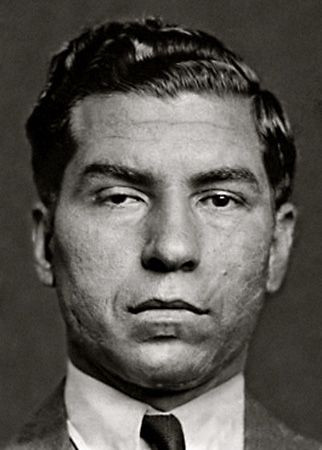 Lucky Luciano, the architect of the Five Families structure and the Mafia Commission, in a historical portrait.
Lucky Luciano, the architect of the Five Families structure and the Mafia Commission, in a historical portrait.
Maranzano’s reign as “boss of bosses” was short-lived. Later in 1931, Luciano orchestrated Maranzano’s murder, dismantling the capo di tutti i capi title, though he consolidated significant power for himself. Instead of another supreme boss, Luciano established The Commission, a governing body initially composed of the heads of the Five Families, along with the bosses of the Buffalo Mafia and the Chicago Outfit. Luciano himself served as the chairman. The Commission’s purpose was to convene to resolve disputes, mediate conflicts, and address shared concerns across the Mafia landscape. This new framework, despite its inherent instability and occasional outbreaks of violence, ushered in an era of unprecedented cooperation and prosperity for the Italian American Mafia. For approximately three decades, the Five Families accumulated immense wealth and influence, becoming deeply entrenched in various sectors of New York City’s economy and society. However, the enactment of the RICO Act in 1970 marked a turning point, initiating a period of decline for the Mafia and the Five Families. The RICO Act proved remarkably effective in combating organized crime, leading to numerous convictions and dismantling key Mafia operations. The severe penalties and lengthy prison sentences associated with RICO violations also incentivized many Mafia members to become informants, further eroding the families’ power and secrecy.
The Lucchese Crime Family
Initially known as the Gagliano family, named after Thomas “Tommy” Gagliano who ascended to leadership after Gaetano “Tommy” Reina’s demise in the Castellammarese War, the Lucchese family adopted its current name in 1951. Upon Gagliano’s death, Thomas (“Tommy” or “Three-Finger Brown”) Lucchese assumed control and renamed the organization. The Lucchese family, in conjunction with the Gambino family, exerted considerable control over New York City’s trucking and garment industries. Their influence extended to various labor unions and trade associations, providing avenues for racketeering and extortion. In 1978, Jimmy Burke, a Lucchese family associate, allegedly masterminded the infamous Lufthansa heist. This audacious crime involved the theft of approximately $5.8 million in cash and jewels from John F. Kennedy International Airport in New York City, an airport believed to be under Lucchese family influence. At the time, it was the largest cash theft in American history. Like the other Five Families, the Lucchese family was also deeply involved in narcotics trafficking, particularly heroin distribution. The latter half of the 1980s witnessed Vittorio (“Little Vic”) Amuso’s rise to power as boss. His leadership ushered in a tumultuous period marked by intense internal conflicts and bloodshed within the family. Despite being convicted on numerous charges in 1992 and receiving a life sentence, Amuso continued to lead the Lucchese family from prison, demonstrating the enduring grip of Mafia bosses even behind bars.
The Bonanno Crime Family
The Bonanno family bears the name of Joseph (“Joe Bananas”) Bonanno, who took over leadership following Maranzano’s assassination. Bonanno holds the distinction of being one of the longest-reigning bosses in Mafia history, maintaining power for over three decades. During his tenure, the Bonanno family grew in prominence, engaging in a range of lucrative criminal enterprises including loan-sharking, illegal gambling, narcotics trafficking, and prostitution. In 1964, Bonanno attempted to seize overarching control of the Mafia, but his plans were exposed, forcing him into hiding. Upon his reappearance, he was compelled into retirement. The ensuing power vacuum, coupled with successful RICO prosecutions against the family, triggered a period of instability and internal strife. In a significant blow to the Bonanno family, FBI agent Joseph Pistone, operating under the alias “Donnie Brasco,” infiltrated their ranks in 1976. Pistone’s undercover operation remained undetected for several years, resulting in a major breach of the family’s security and leading to the Bonanno family’s removal from The Commission. However, the family eventually regained its seat on The Commission under the leadership of Joseph Massino in the 1990s. More recently, Michael (“the Nose”) Mancuso headed the Bonanno family.
The Colombo Crime Family
The origins of the Colombo family trace back to the group initially led by Joseph Profaci. Profaci remained boss until his death in 1962. His brother-in-law, Joseph Magliocco, succeeded him but soon conspired with Joseph Bonanno to assassinate the leaders of the Gambino and Lucchese families. This plot, however, was betrayed to The Commission by their own hitman, Joseph Colombo. As a reward for his loyalty and for thwarting the assassination plot, Colombo was appointed boss of the family in 1964, and the family was subsequently renamed after him. In a surprising turn, Joseph Colombo adopted a public stance against what he perceived as FBI harassment and racial profiling following the implementation of the RICO Act. He founded the Italian American Civil Rights League, advocating for the rights of Italian Americans and publicly challenging law enforcement tactics. Like its counterparts, the Colombo family derived its wealth from a wide array of illegal activities, including extortion, loansharking, and narcotics distribution. In 2011, the Colombo family faced a devastating series of arrests, significantly weakening its leadership structure and leaving the family without a clearly identified boss for a period.
The Gambino Crime Family
The Gambino family’s roots extend back to the early 20th century, with Salvatore D’Aquila recognized as its first boss. Following D’Aquila’s murder in 1928, a succession of leaders followed, including Vincent Mangano, who assumed control in 1931 when the Five Families structure was formally established. In 1951, Mangano was murdered, allegedly on the orders of Albert Anastasia, the head of the notorious Murder, Inc., a Mafia-affiliated assassination squad. Anastasia then became the boss, but his violent and unpredictable reign ended abruptly with his own murder in 1957. Carlo Gambino then ascended to leadership, renaming the family and ushering in an era of unprecedented power and influence. Gambino’s tenure, lasting until 1976, saw the family rise to become arguably the most powerful of the Five Families, and Carlo Gambino himself was often considered the “boss of bosses,” although he officially eschewed the title. After Gambino’s death, Paul Castellano became boss. However, in 1985, John Gotti orchestrated Castellano’s assassination and seized control of the family. Gotti, known for his flamboyant style and media attention, continued the family’s involvement in traditional rackets like narcotics trafficking and racketeering, while also expanding into more legitimate businesses to diversify income streams and mask illegal activities. Gotti’s reign ended with his conviction on various charges, including Castellano’s murder. Leadership of the Gambino family has changed hands multiple times since Gotti’s downfall. Frank Cali was reportedly the Gambino boss from 2015 until his murder in 2019, highlighting the ongoing violence and instability that can plague even the most powerful Mafia families.
The Genovese Crime Family
Originally known as the Luciano family, after its founder Lucky Luciano, the Genovese family is considered one of the most powerful and secretive of the Five Families. Luciano’s second-in-command was Vito Genovese. Following Luciano’s deportation to Italy in 1946, Frank Costello assumed leadership. However, Costello faced challenges to his authority from Vito Genovese, who harbored ambitions to lead the family himself. In 1957, Genovese ordered a hit on Costello. Although Costello survived the assassination attempt, he stepped down, paving the way for Genovese to take over. Genovese renamed the family after himself and effectively became the most powerful boss in New York, often considered the “boss of bosses” by many within the Mafia. After Genovese’s death in 1969, Vincent (“Chin”) Gigante rose to prominence as boss. Gigante gained notoriety as “The Oddfather” due to his bizarre behavior, including wandering around New York City in pajamas and a bathrobe. Law enforcement believed this eccentric behavior was a calculated tactic to feign mental instability and avoid prosecution. Despite these tactics, Gigante was eventually convicted of racketeering and other crimes in 1997 and sentenced to prison. The Genovese family reportedly became exceptionally powerful in the 1990s, attributed in part to their cautious and secretive operational style, minimizing law enforcement scrutiny. After Gigante’s death in 2005, Liborio Bellomo reportedly became the head of the Genovese family. A significant source of the Genovese family’s wealth stemmed from narcotics trafficking, particularly heroin, utilizing their control over workers’ unions in key ports to facilitate smuggling operations.
The Five Families in American Popular Culture
Despite a decline in their real-world power compared to their mid-20th-century zenith, the Five Families have cemented a lasting and pervasive presence in American culture. They have become a recurring subject in influential films and television series throughout the late 20th and early 21st centuries, shaping public perceptions and fascination with organized crime. Iconic movies such as Francis Ford Coppola’s The Godfather (1972) and The Godfather: Part II (1974), Martin Scorsese’s Goodfellas (1990), and Donnie Brasco (1997) have all drawn inspiration from or directly depicted the world of the Five Families. On television, series like The Sopranos (1999–2007), starring James Gandolfini, and Boardwalk Empire (2010–14), featuring Steve Buscemi, have further explored the complex dynamics and criminal enterprises of Mafia families, contributing to the enduring mythos of the American gangster and the Five Families.

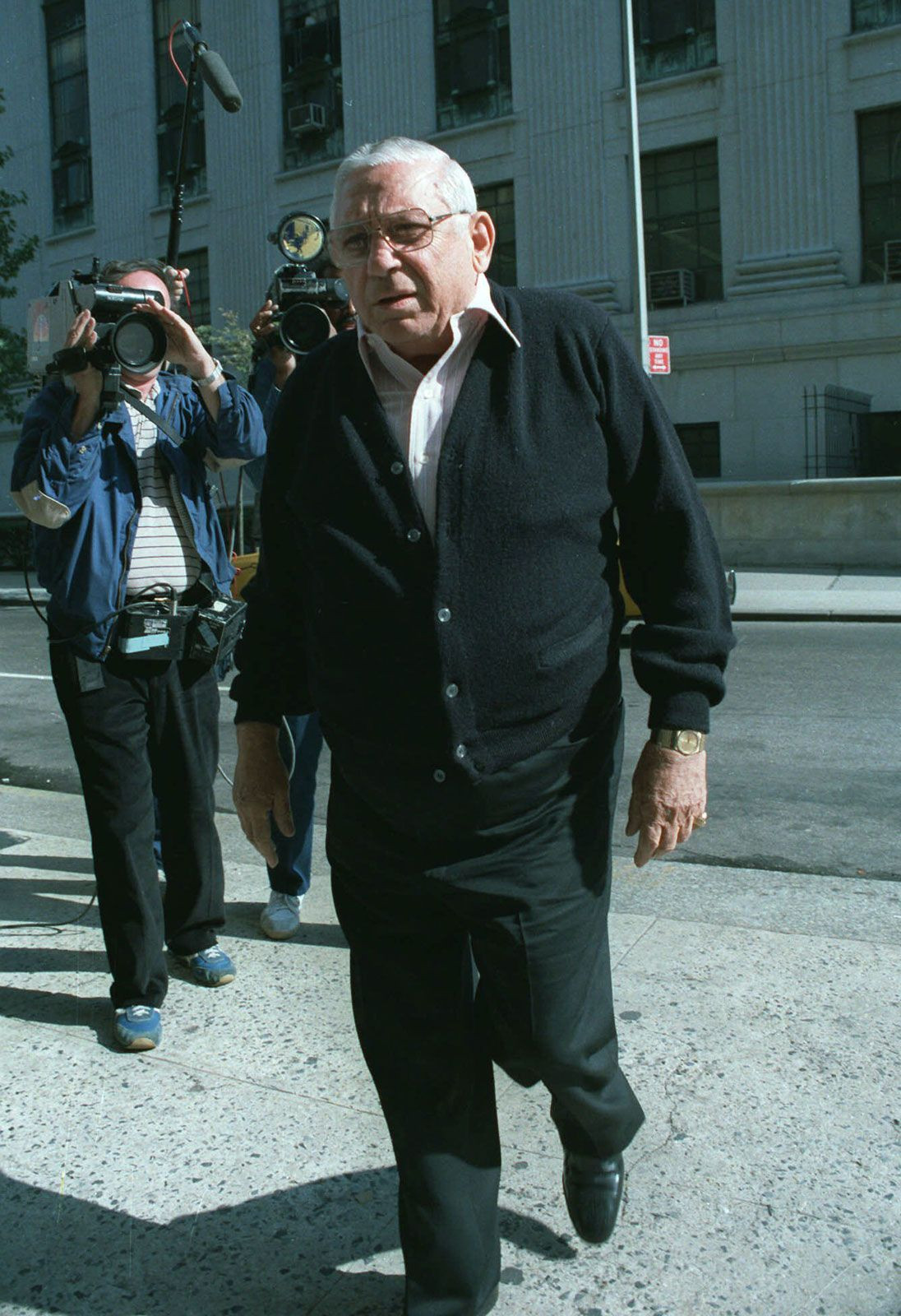 Anthony Corallo, also known as 'Tony Ducks', arrives at Federal Court in 1986 amidst the Lucchese Crime Family investigations.
Anthony Corallo, also known as 'Tony Ducks', arrives at Federal Court in 1986 amidst the Lucchese Crime Family investigations.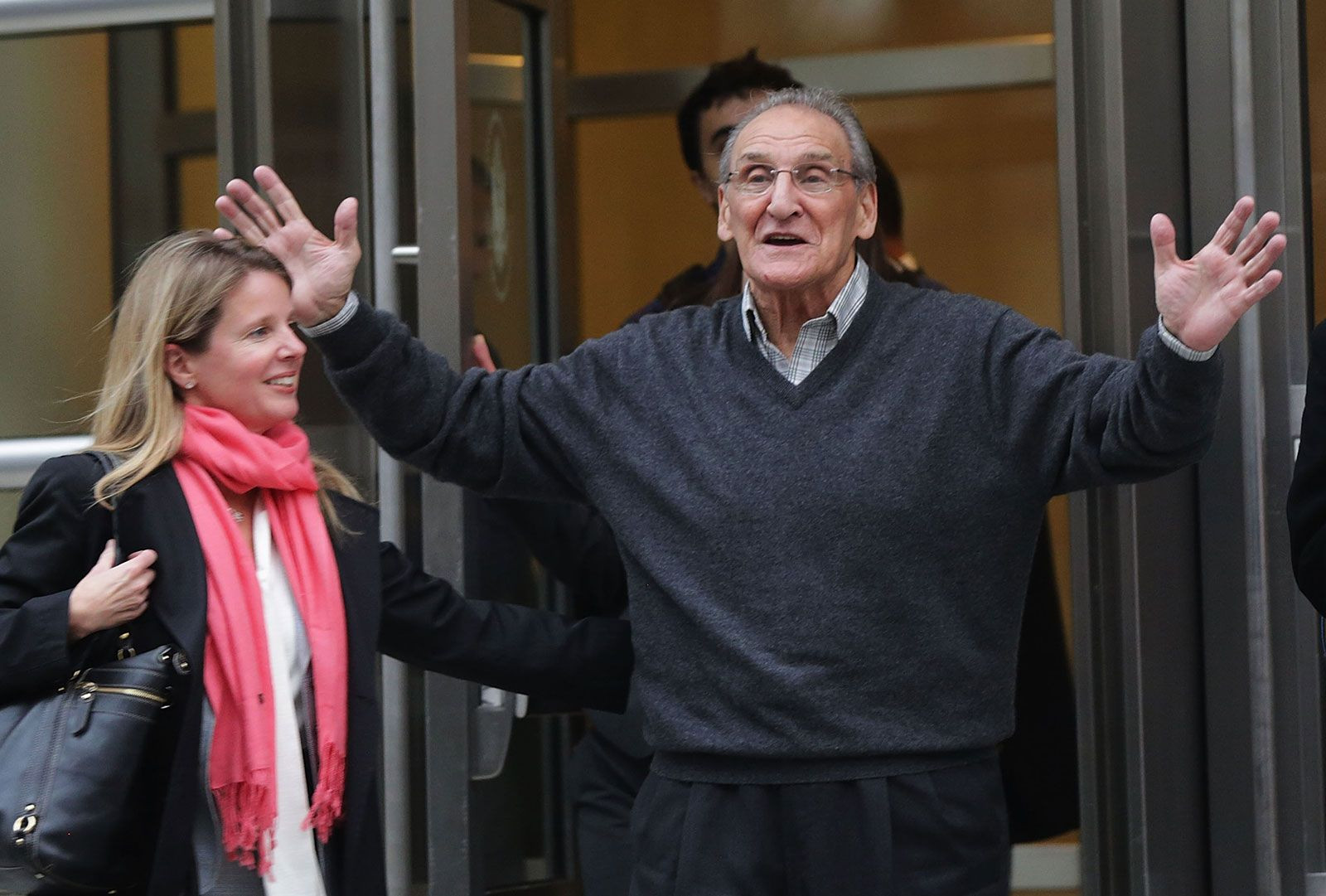 Vincent Asaro, a reputed former captain in the Bonanno crime family, departs Brooklyn court after his 2015 trial in New York City.
Vincent Asaro, a reputed former captain in the Bonanno crime family, departs Brooklyn court after his 2015 trial in New York City. Joseph Profaci, the original boss of what became the Colombo crime family, in a photograph from 1959.
Joseph Profaci, the original boss of what became the Colombo crime family, in a photograph from 1959.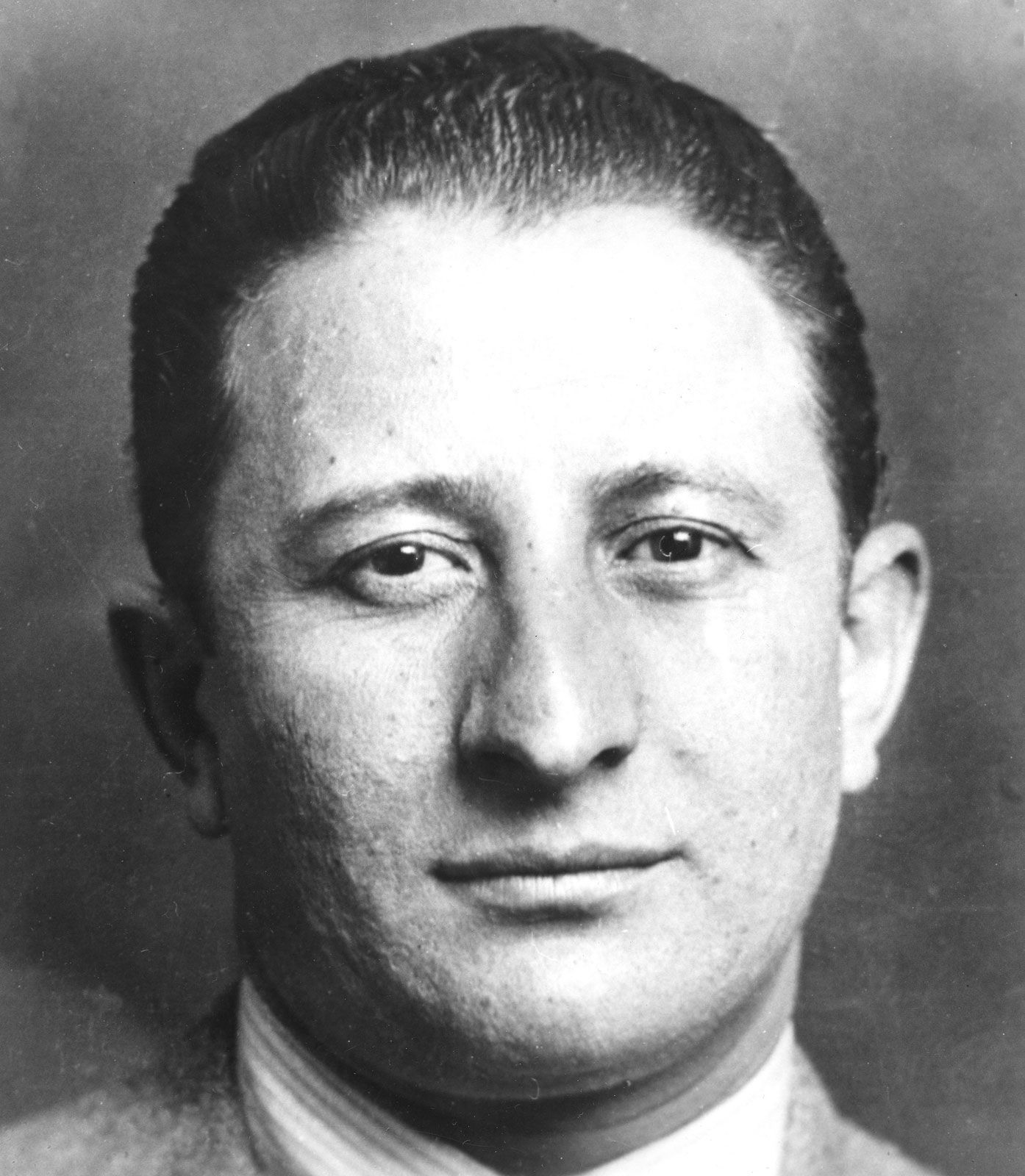 Carlo Gambino, who renamed and solidified the power of the Gambino crime family, in a photo circa 1935.
Carlo Gambino, who renamed and solidified the power of the Gambino crime family, in a photo circa 1935.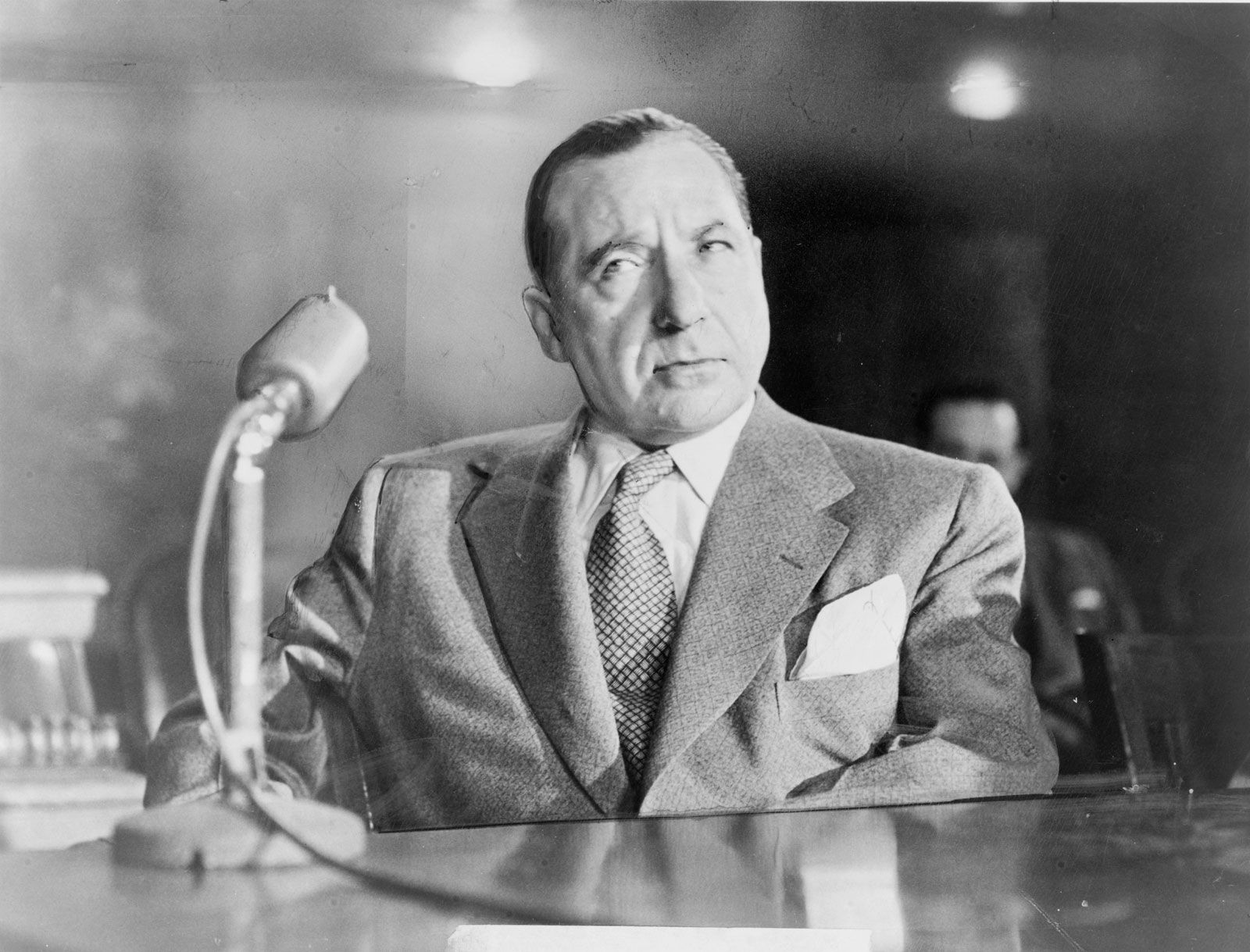 Frank Costello, acting boss of the Luciano crime family, testifies in 1951 before the Kefauver Committee investigating organized crime.
Frank Costello, acting boss of the Luciano crime family, testifies in 1951 before the Kefauver Committee investigating organized crime.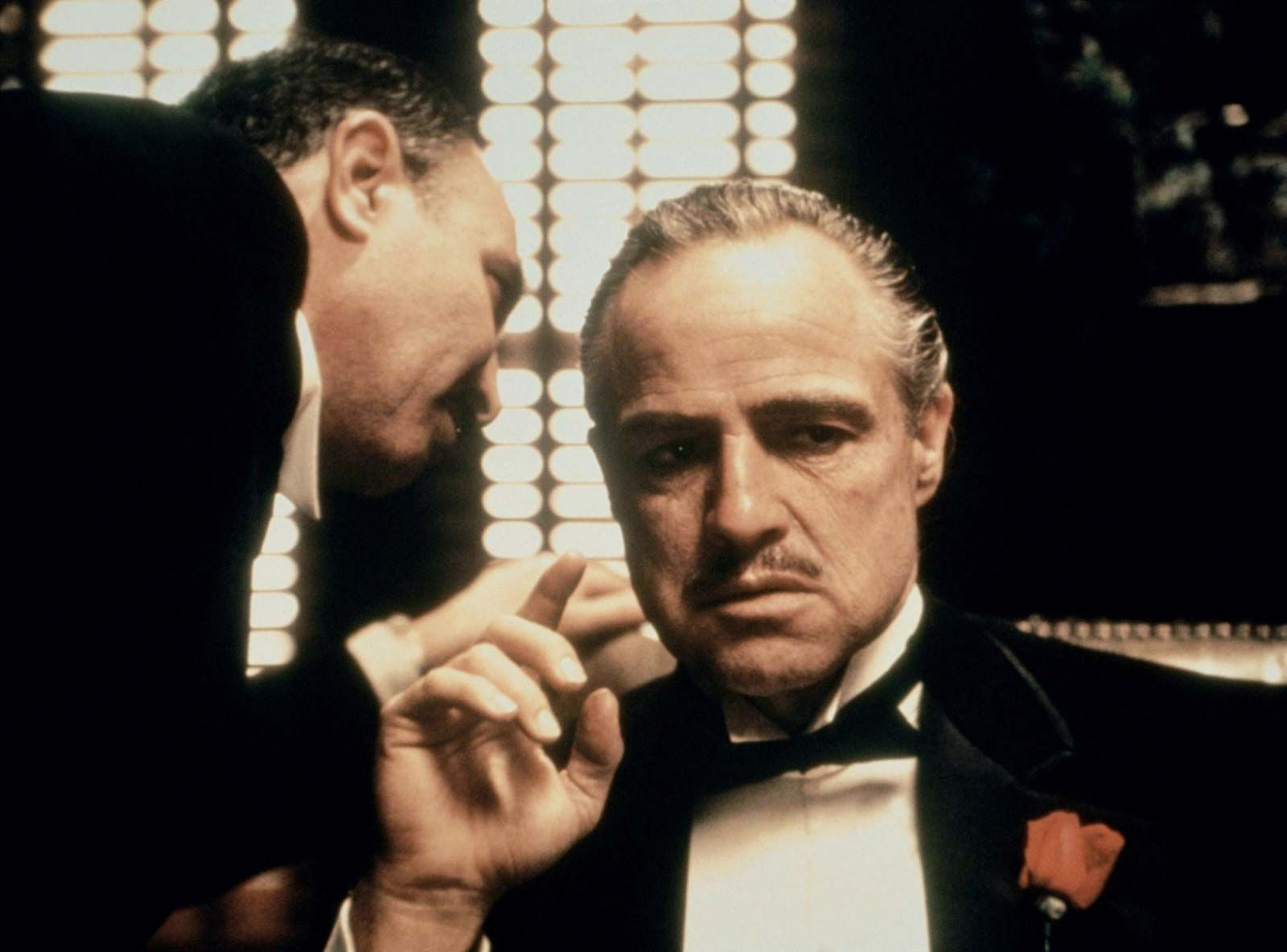 A scene from 'The Godfather' (1972), a seminal film that cemented the Mafia's image in American culture.
A scene from 'The Godfather' (1972), a seminal film that cemented the Mafia's image in American culture.